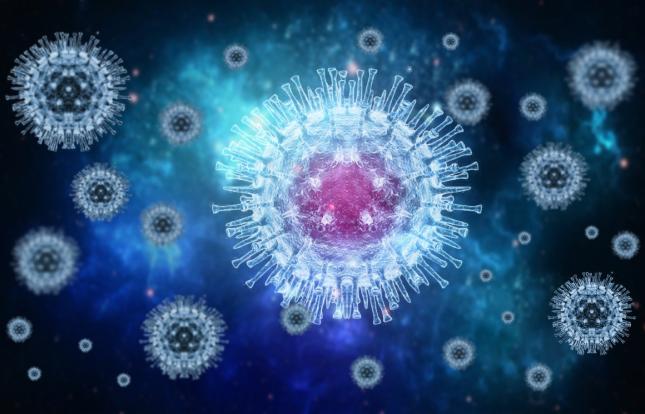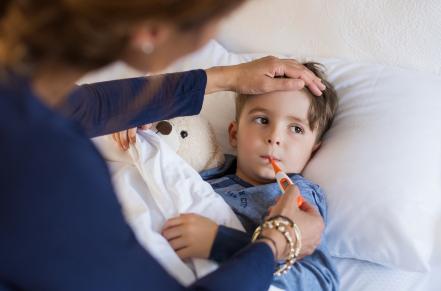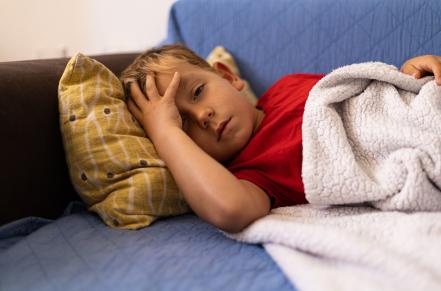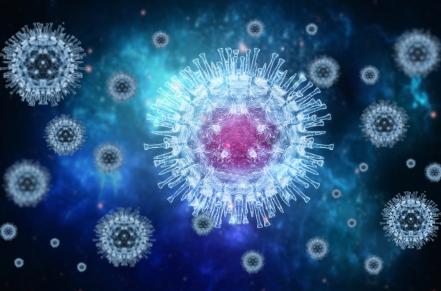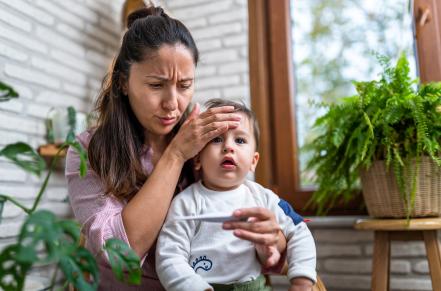What Is It?
Mpox is a rare disease caused by a virus. The earliest cases were found in Africa after a person had contact with an infected animal. There are two types of mpox. This article is about the type of mpox found in the United States.
In the United States, mpox is spread from person to person. Mpox is rarely fatal. Young children with skin conditions such as eczema and people who are immunocompromised and/or pregnant or breastfeeding are more likely to get seriously ill if they get mpox.
What Are the Symptoms?
People with mpox get a rash that starts as flat red bumps. Then the bumps become raised, fluid-filled blisters. The rash may appear on the face or mouth or on other parts of the body such as the hands, feet, chest, genitals, or anus. The rash may be painful or itchy, and the blisters may ooze. There may be other symptoms such as fever, chills, headache, muscle aches, swollen lymph nodes, and respiratory symptoms (sore throat, nasal congestion, cough).
• Sometimes people have flu-like symptoms before or after the rash appears.
• Sometimes people only get a rash.
In time, the rash and blisters become scabs that fall off, leaving healthy skin. The illness typically lasts 2-4 weeks.
Who Gets It and How?
• Mpox can spread to anyone through close physical contact with the rash, scabs, body fluids, or respiratory secretions of a person who is infected.
• The virus can spread during activities with prolonged face-to-face and intimate contact such kissing, cuddling, or sex.
• Most of the cases have been in men who have sex with men.
The risk of young children getting mpox is low. However, it is possible for young children to get infected if they have close physical contact with someone with mpox. There is also a risk that the illness could spread by touching objects, surfaces, and fabrics that have been used by someone with mpox (such as toys, eating utensils, sleeping mats, clothing, bedding, or towels). In addition, mpox can be transmitted to a fetus during pregnancy or to a newborn by close contact during and after birth.
When Should People with this Illness Be Excluded?
Mpox symptoms can look like other childhood illnesses such as hand foot and mouth disease and chickenpox. Children and staff with a fever and rash will need to stay home until they see their health care provider and receive a diagnosis. Isolate children who develop symptoms of mpox during the day until their family can pick them up. Always provide supervision and use prevention strategies that are recommended for infectious diseases.
A person who has mpox should stay home until all of the scabs have fallen off and a fresh layer of healthy skin has formed. Work with a healthcare provider and/or the local health department to decide when a child with mpox can safely return to your early childhood program.
Where Do I Report It?
• Notify parents and staff about any cases of mpox in your program so they can watch for symptoms. Communicate fact-based information to staff and families in a way that treats everyone with kindness and respect. Remember, personal health information is confidential.
• Report any case of mpox in your program to the local health department.
How to Limit the Spread of Mpox
Follow everyday practices to reduce the risk of spreading infectious diseases such as:
• Perform daily health checks. Watch for early symptoms of mpox such as a rash or blisters.
• Wash your hands regularly.
• Cover coughs and sneezes.
• Wipe noses with clean tissues, dispose of them properly and wash your hands.
• Wear gloves if you have contact with a rash or body fluids.
• Refrain from kissing children, especially on the lips.
• Don’t share towels, bed linens, clothing, etc.
• Wash bed linens weekly and when soiled.
• Clean: objects and surfaces regularly.
• Clean and disinfect: objects and surfaces soiled with body fluids and/or if someone in your program has mpox.
Note: At this time, widespread vaccination for mpox for children or staff in early childhood settings is not recommended. For more information on vaccination against mpox, see the CDC's Mpox Vaccination Basics page.
Resources:
Centers for Disease Control (CDC) page about mpox: https://www.cdc.gov/poxvirus/mpox/your-health/index.html
CCHP Safer Cleaning, Sanitizing, and Disinfecting Posters
https://cchp.ucsf.edu/safer-cleaning-sanitizing-and-disinfecting-posters
Updated August 2024, UCSF California Childcare Health Program
This article was made possible with funding from the Heising-Simons Foundation.

